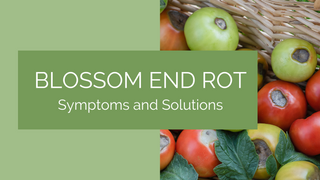Blossom end rot (BET) is a visually unappealing condition that affects tomatoes. It is characterized by a dark, bruise-like, area that forms on the blossom end of the fruit, which is the side opposite the stem. Over time, this area grows larger, becomes sunken, and develops a leathery texture.
The main cause of BET is a lack of calcium in the fruit. This deficiency is often a result of drought and water stress. Under these conditions, the plant's root hairs are damaged, preventing the uptake of essential nutrients like calcium.
If you observe signs of BET, there are several steps you can take to address the issue:
- Ensure even watering: Tomatoes thrive when the soil is consistently moist, not too soggy or too dry.
- Avoid over-fertilization: Tomatoes require ample nutrients, but excessive nitrogen can be detrimental. Follow the fertilizer labels and avoid excessive nitrogen application.
- Choose resistant varieties: Select tomato varieties that have been bred to resist blossom end rot.
- Check soil pH: Tomatoes prefer a soil pH of around 6.5. Test your soil's pH and adjust if necessary.
Resist the urge to add extra calcium immediately: Often, there is sufficient calcium in the soil, but the plant's ability to absorb and transport it to the fruit is impaired. Adding excessive calcium can hinder the uptake of other essential nutrients like magnesium and iron. Always conduct a soil test before adding any amendments.
By following these steps, you can mitigate blossom end rot and promote healthier tomato plants with fewer fruit blemishes.
Photo from Julie Craig from Getty Images


